Vendor Management with AnyDB
Overview
This guide shows how to use AnyDB to manage an organisation's relationships with vendors and suppliers in a unified, customizable workspace. It helps maximize the value derived from these relationships while controlling costs and mitigating risks. Whether you're running internal ops, client-facing engagements, or cross-functional initiatives, AnyDB helps you stay organized, on track, and fully in sync with your team.
Business Problem
Ineffective vendor or supplier management process leads to operational inefficiencies, increased costs, and vulnerabilities that can result in being out of stock, out of compliance, or even out of business. Nonetheless, effective vendor management database in AnyDB can make the work a lot easier and more efficient.
Solution Summary
In vendor management with AnyDB, you can:
- Manage vendor contacts, contracts, and Requests for Proposals (RFPs).
- Follow up on vendor onboarding and offboarding processes.
- Store and link related documents, notes, and assets (e.g., external reports, payment terms, and certificates).
- Use a dashboard to monitor key performance indicators (KPIs), audit summaries, compliance, and cost rates.
Here you can see the workflow of the database:
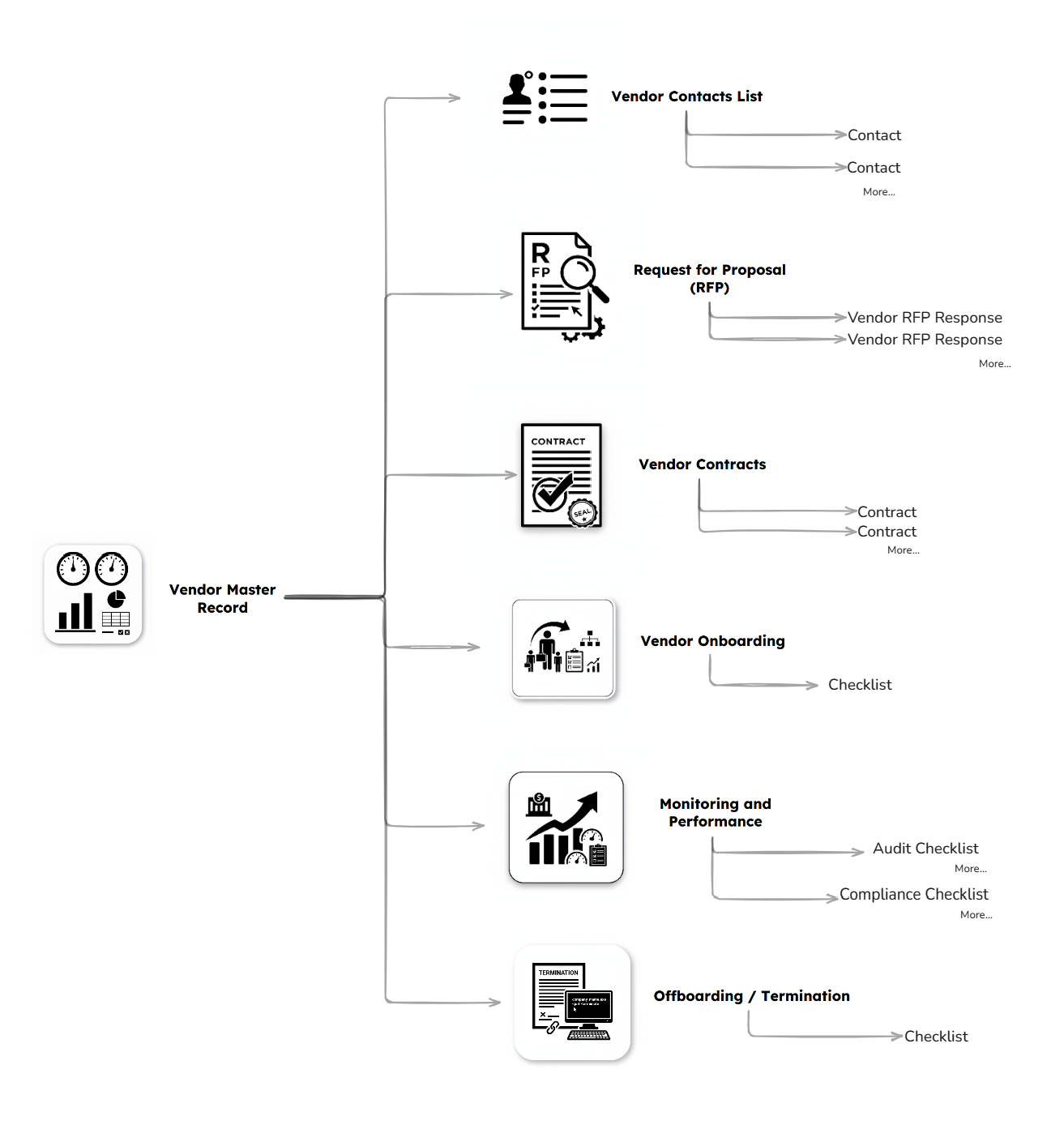
And here you can see the master record, that connects to all other records:
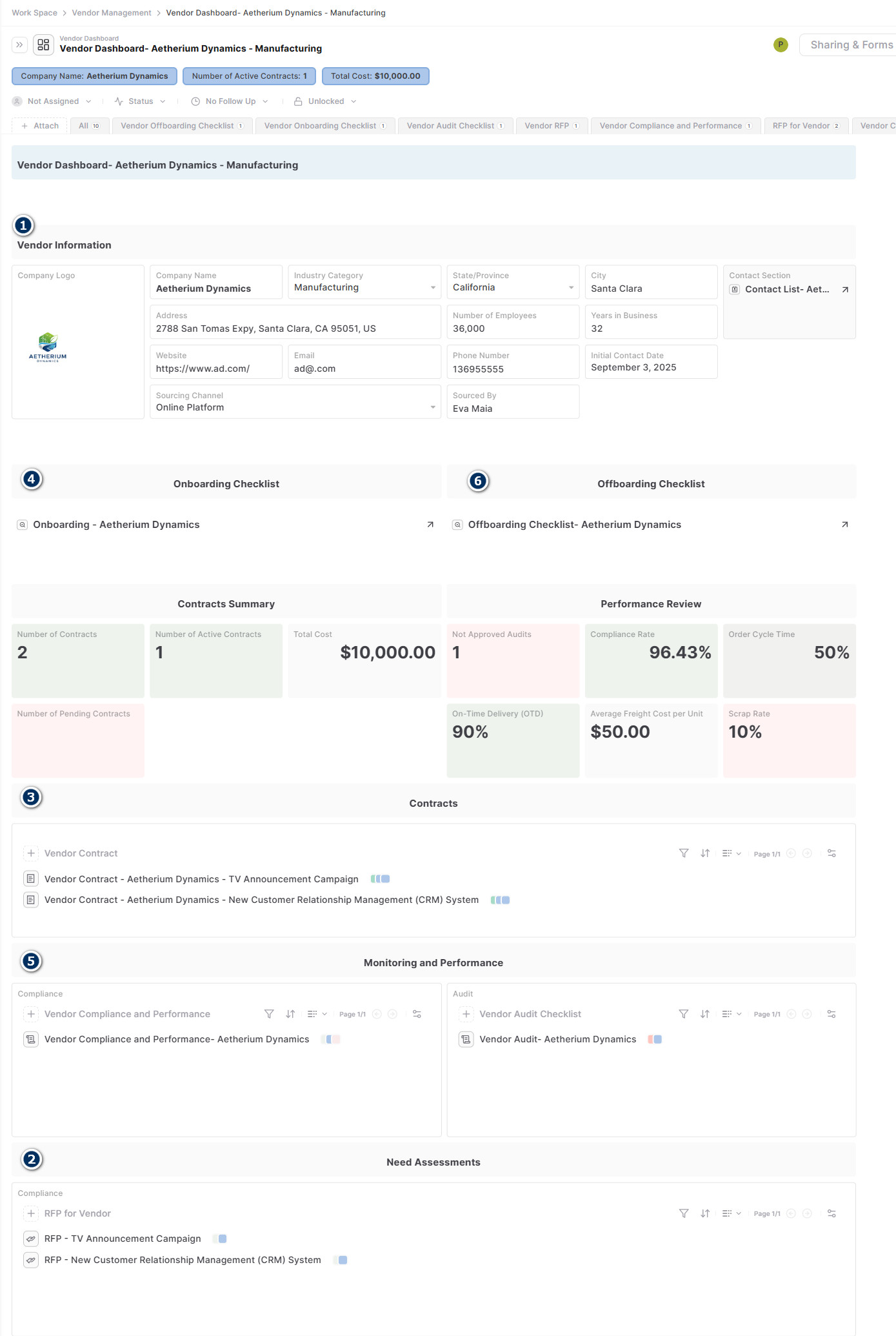
Step-by-Step Instructions
1. Get a Vendor Lined Up
- Once a vendor is selected, add vendor's info in the section.
- Then click on Contact section arrow.
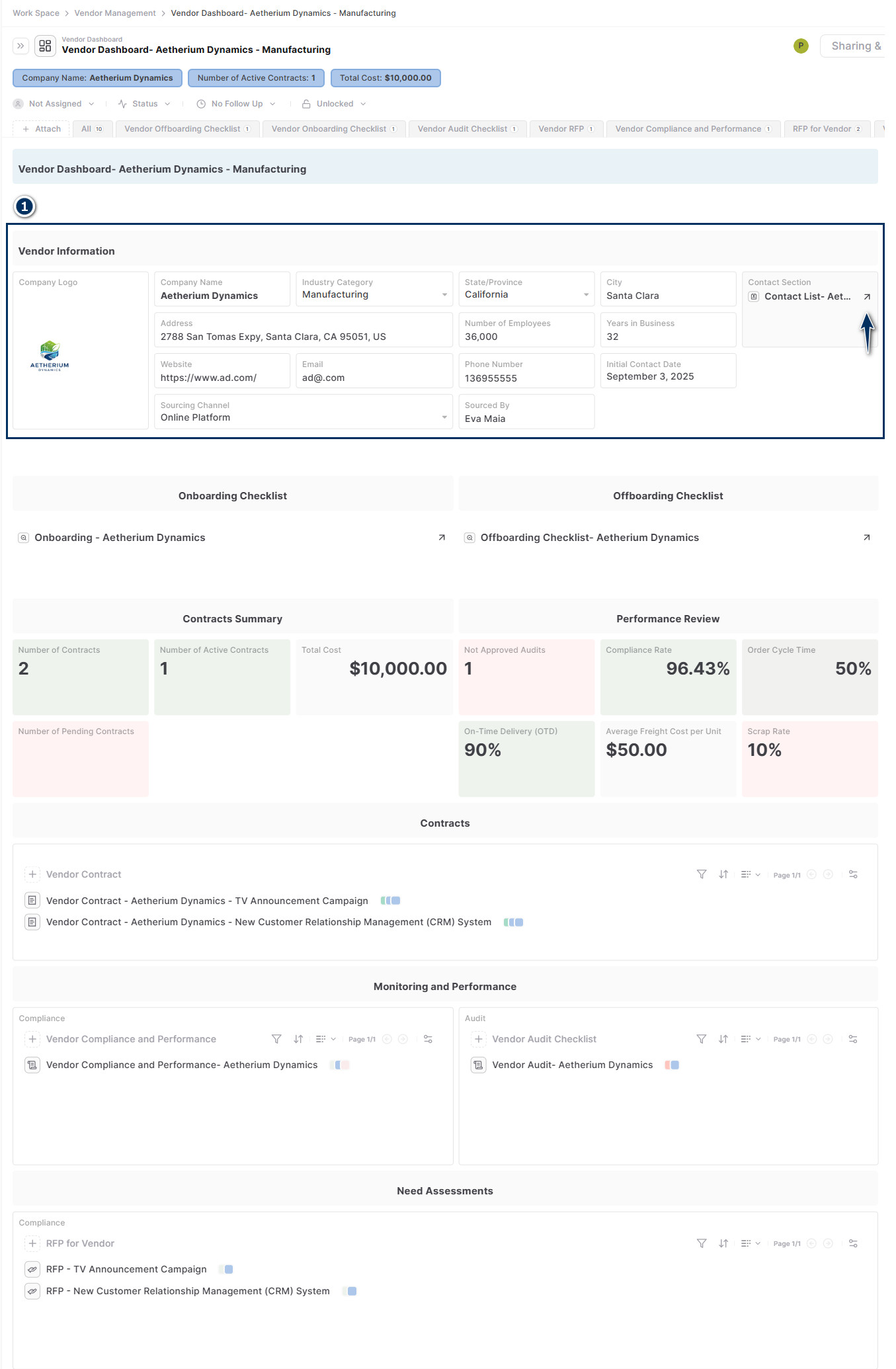
- Add vendor's info in the section and click on +Vendor Contact.
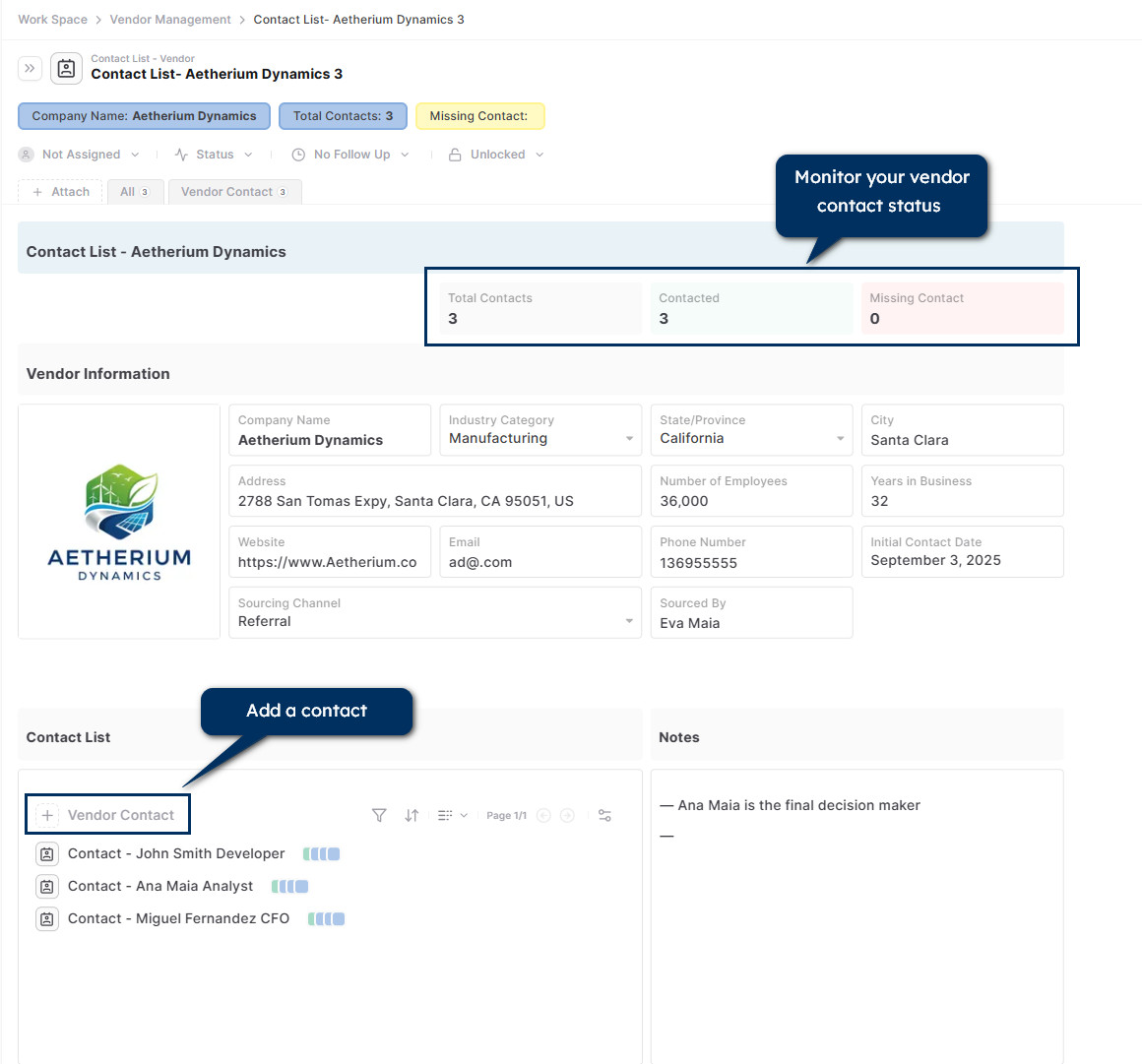
- Add contact details, status updates (contacted/not contacted), RACI information, and notes. You can also attach documents such as credentials or IDs.
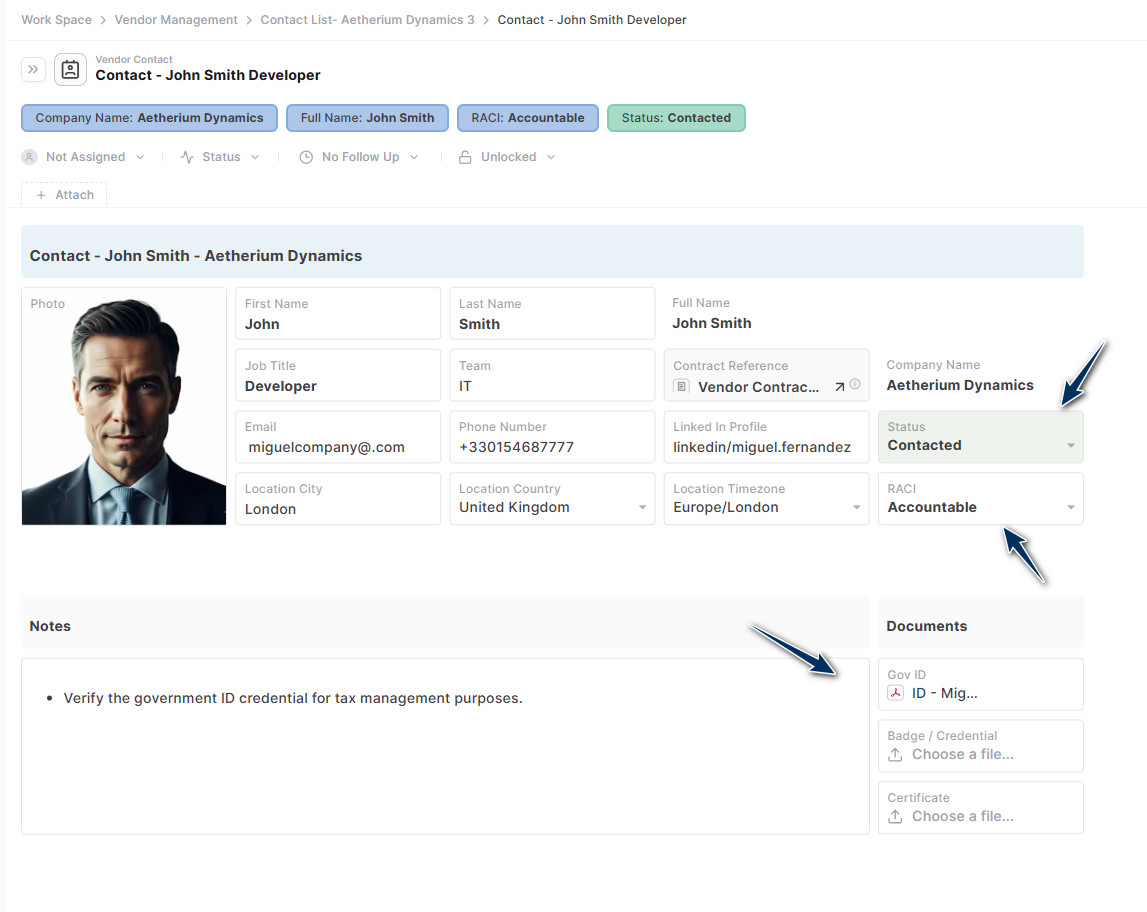
2. Conduct a Request for Proposal (RFP)
- In the Need Assessment section, click on + RFP for Vendor.
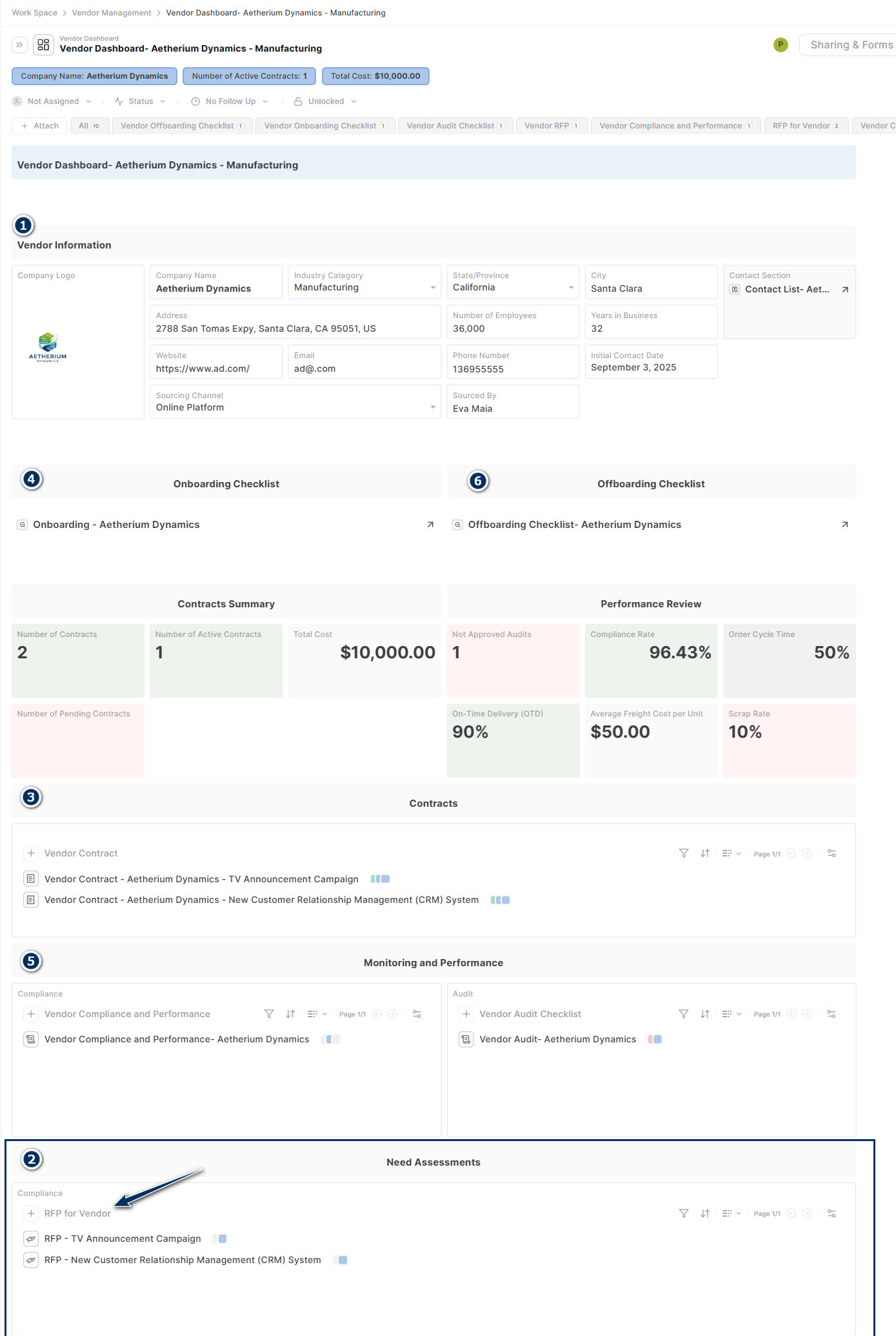
- Add:
- A title
- Due date
- Assigned owner
- Priority and status (Low/Medium/High, Open/Closed/Cancelled/Awarded)
- Summary / Scope of work
- Define requirements and criteria
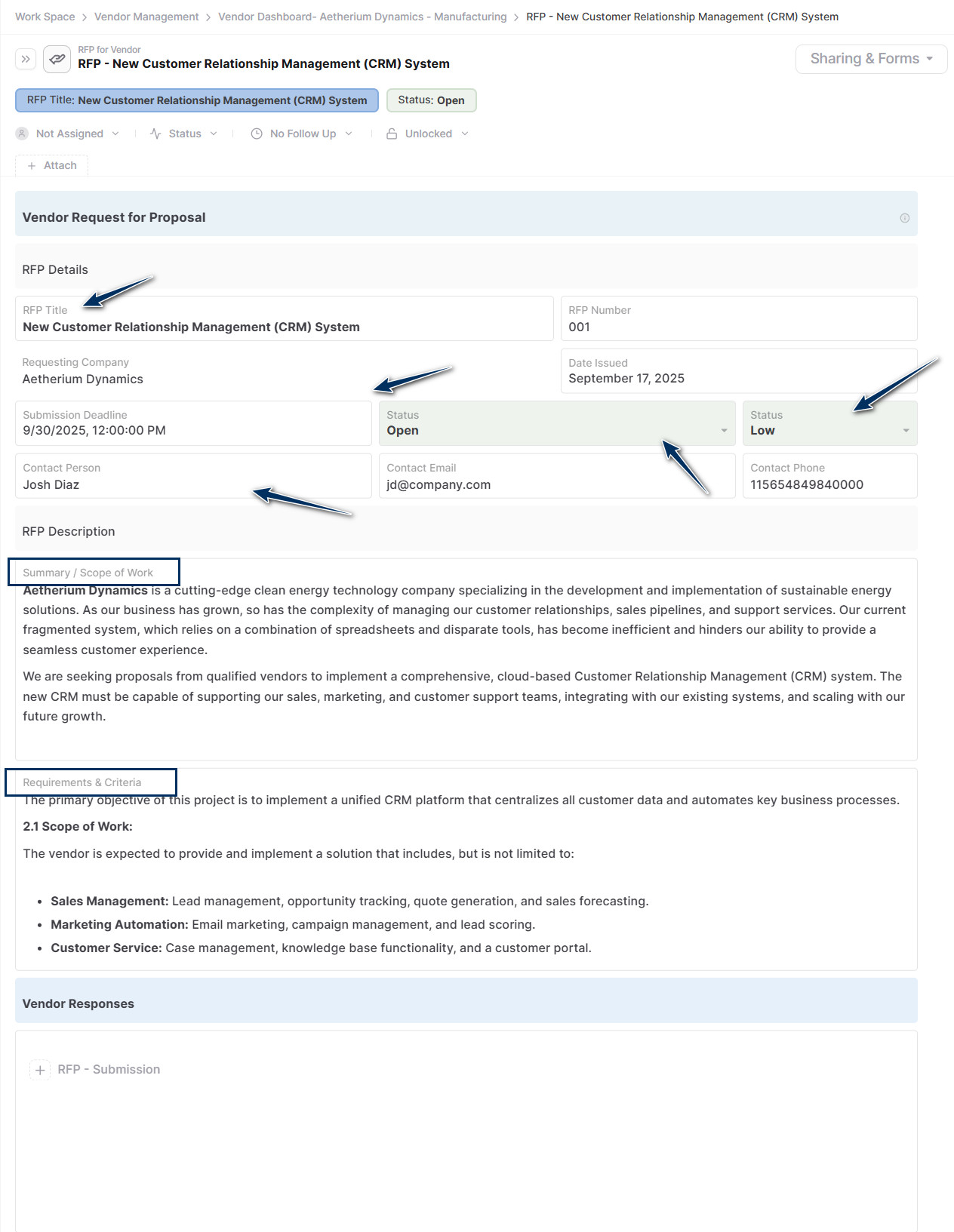
-
Share it with the vendor in order to get the RFP Vendor Reponse.
-
In order to submit a RFP Vendor Response, vendor will click on + RFP - Submission.
-
Vendor will fill out:
- Vendor Company Name
- Contact
- Email Address
- Phone Number
- Attach documents and quotations as needed
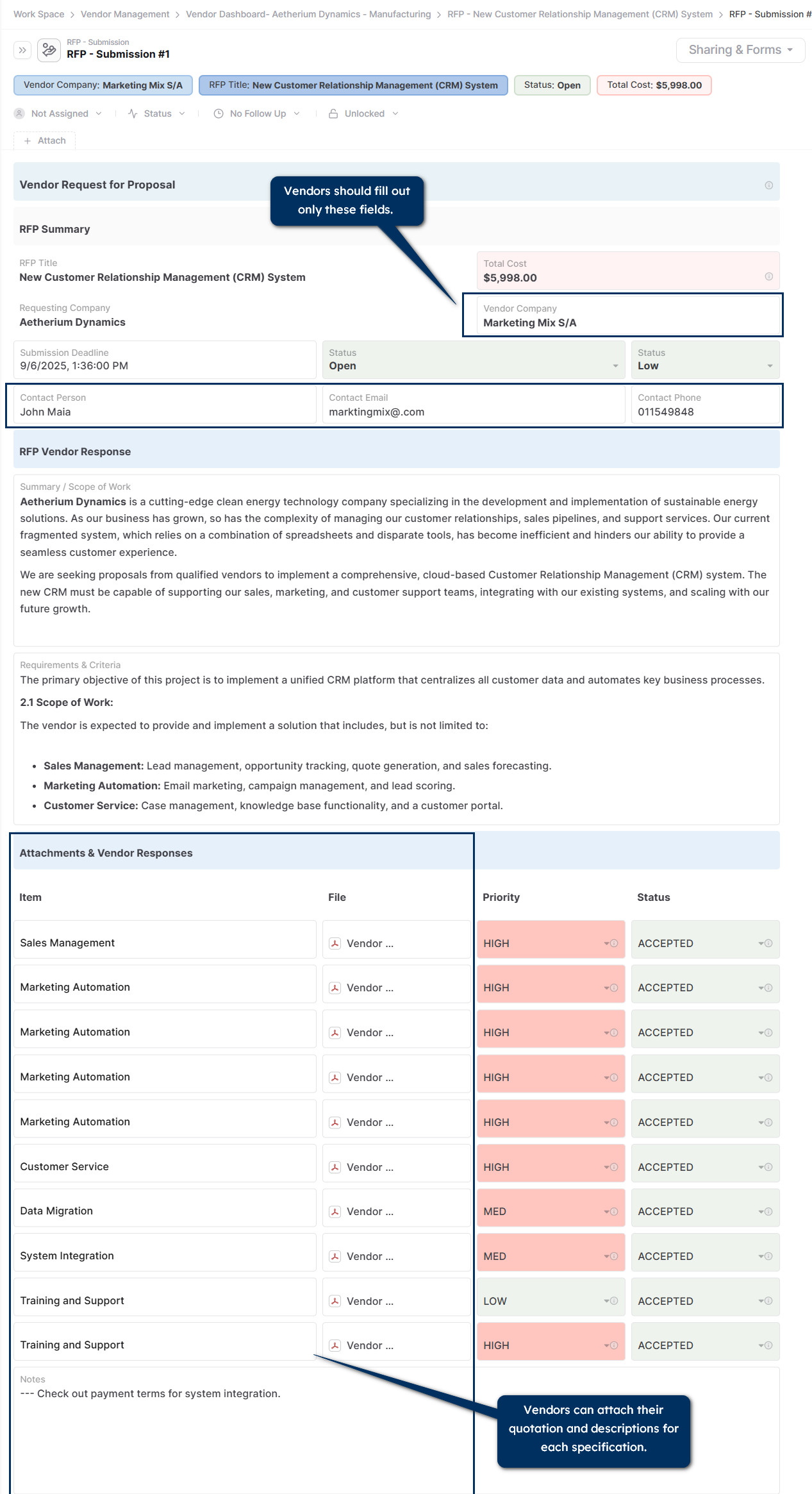
3. Manage Vendor Contracts
-
Use this section to summarize contract information. Add:
- Vendor information
- Contract description
- Start date, end date, expiration date, last audit date, next review date
- Contract status (Approved/Cancelled/Pending/Vetting)
- Total contract cost
-
Also, attach the agreement files, such as the contract, payment terms, or licenses.
-
Use the approval section to get alignment from key team members or leaders.
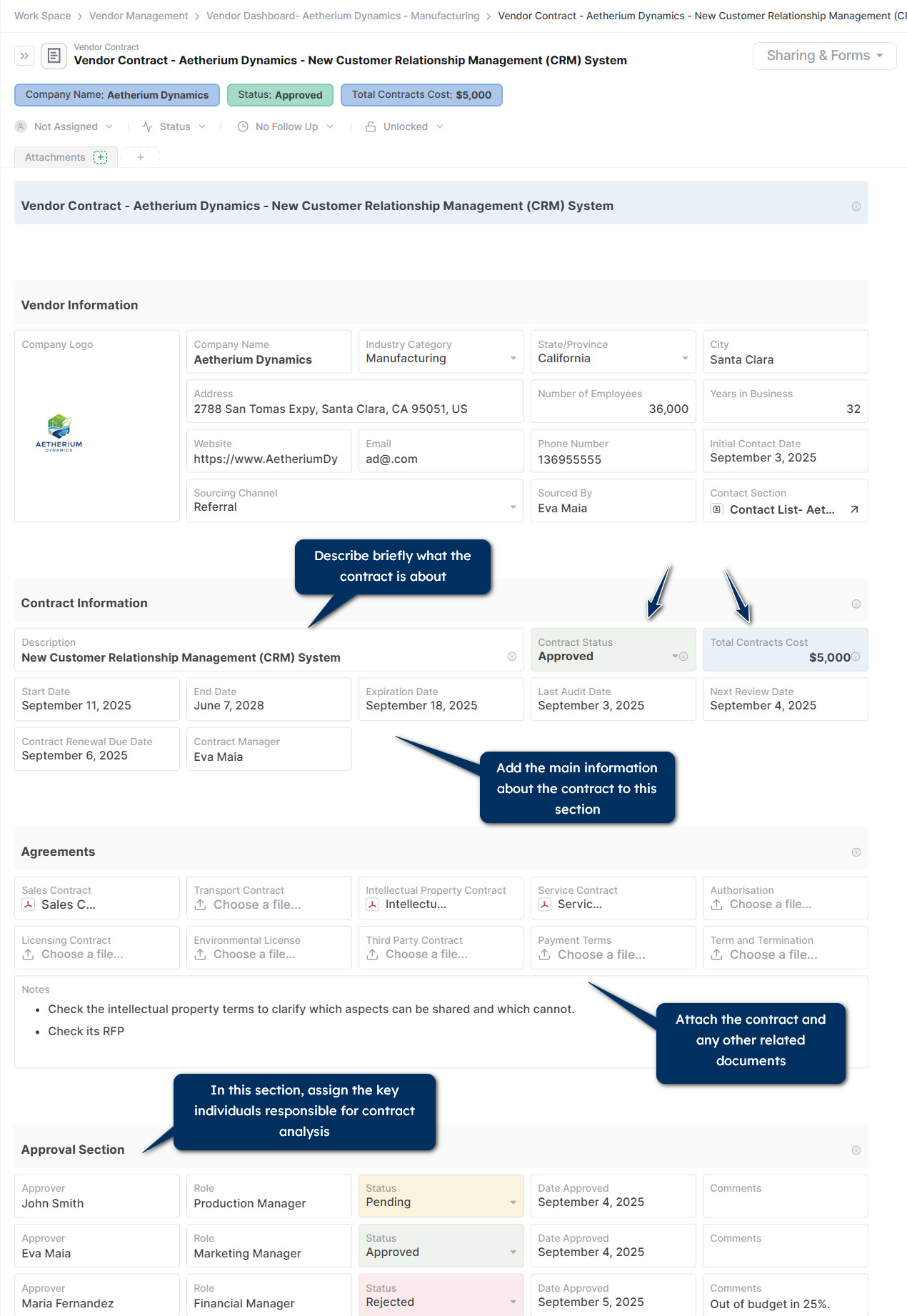
4. Get the Vendor Onboarded
Ensure that necessary information, documents, and approval are collected and verified before the vendor can begin providing goods or services
-
Link the onboarding checklist to its related contract and contact list (Vendor information may be found across different team members)
-
Mark the checkbox as long as the criteria are met
-
Add comments, responsible, and completion date
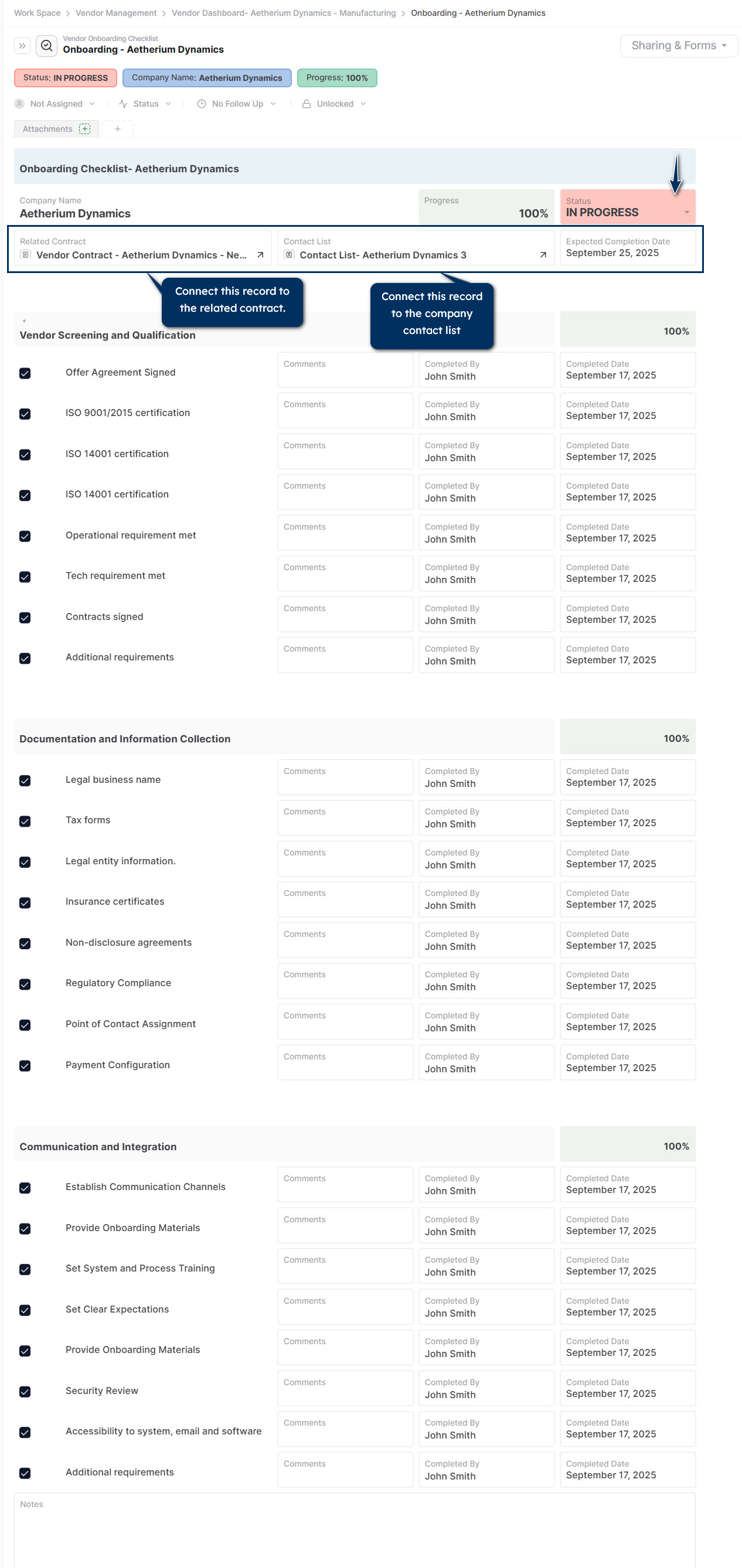
5. Evaluate Vendor Performance and Compliance
Ensure that the vendor meets contractual obligations and supports your business's goals, standards, policies, and legal or regulatory requirements and monitor vendor performance by adding key metrics.
-
In section 1, Add all necessary document names to the list and attach the vendor's documents to each
-
In section 2, add KPIs, document report and time period for evaluation
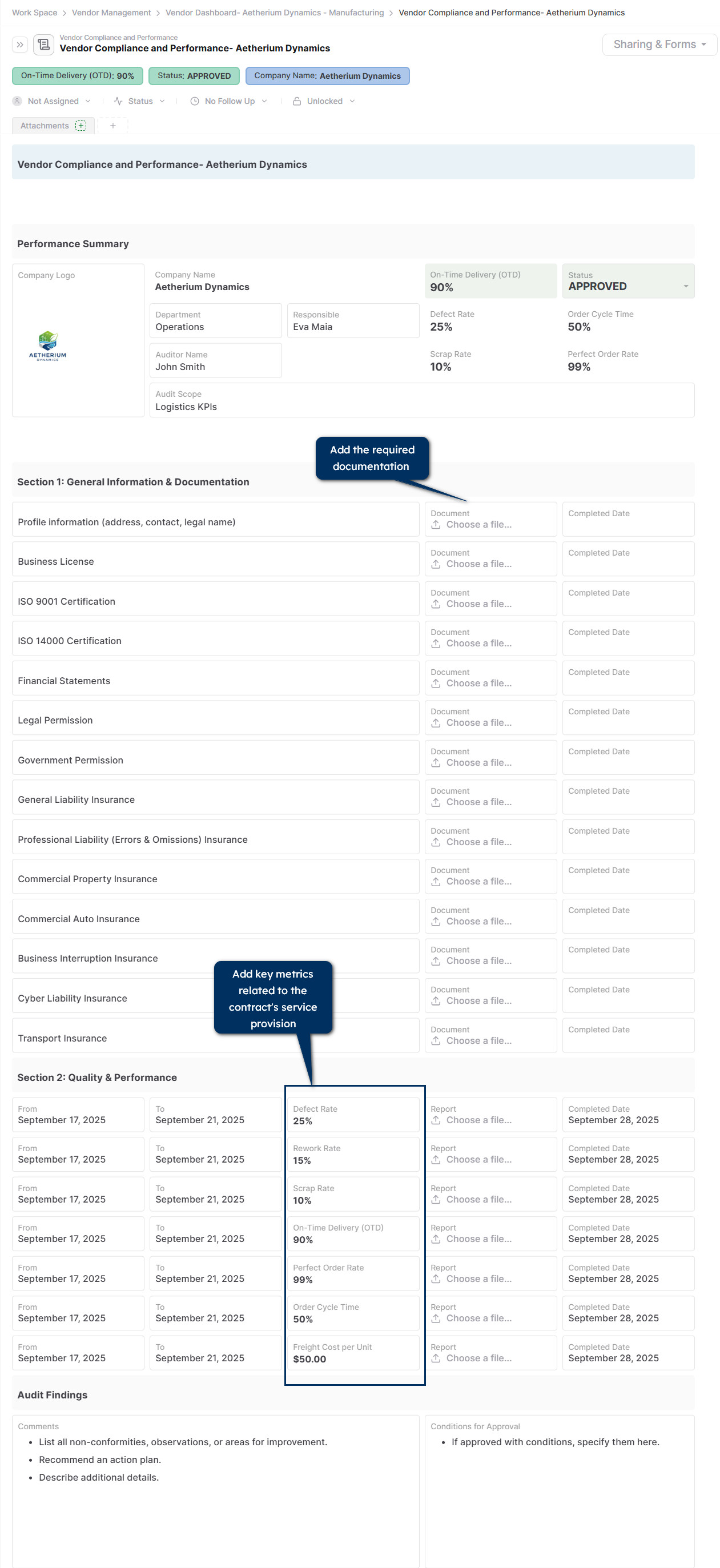
6. Get the Vendor Offboarded
List all the actions you must take to formally and securely terminate a business relationship with the vendor.
- Change the contract status (in the contract record).
- Link the onboarding checklist to its related contract and contact list (Vendor information may be found across different team members).
- Cancel accessibilities.
- IT systems, databases, and applications
- Physical locations (e.g., key fobs, ID badges)
- Shared drives and communication channels
- Set up termination agreements
- Conduct operational termination
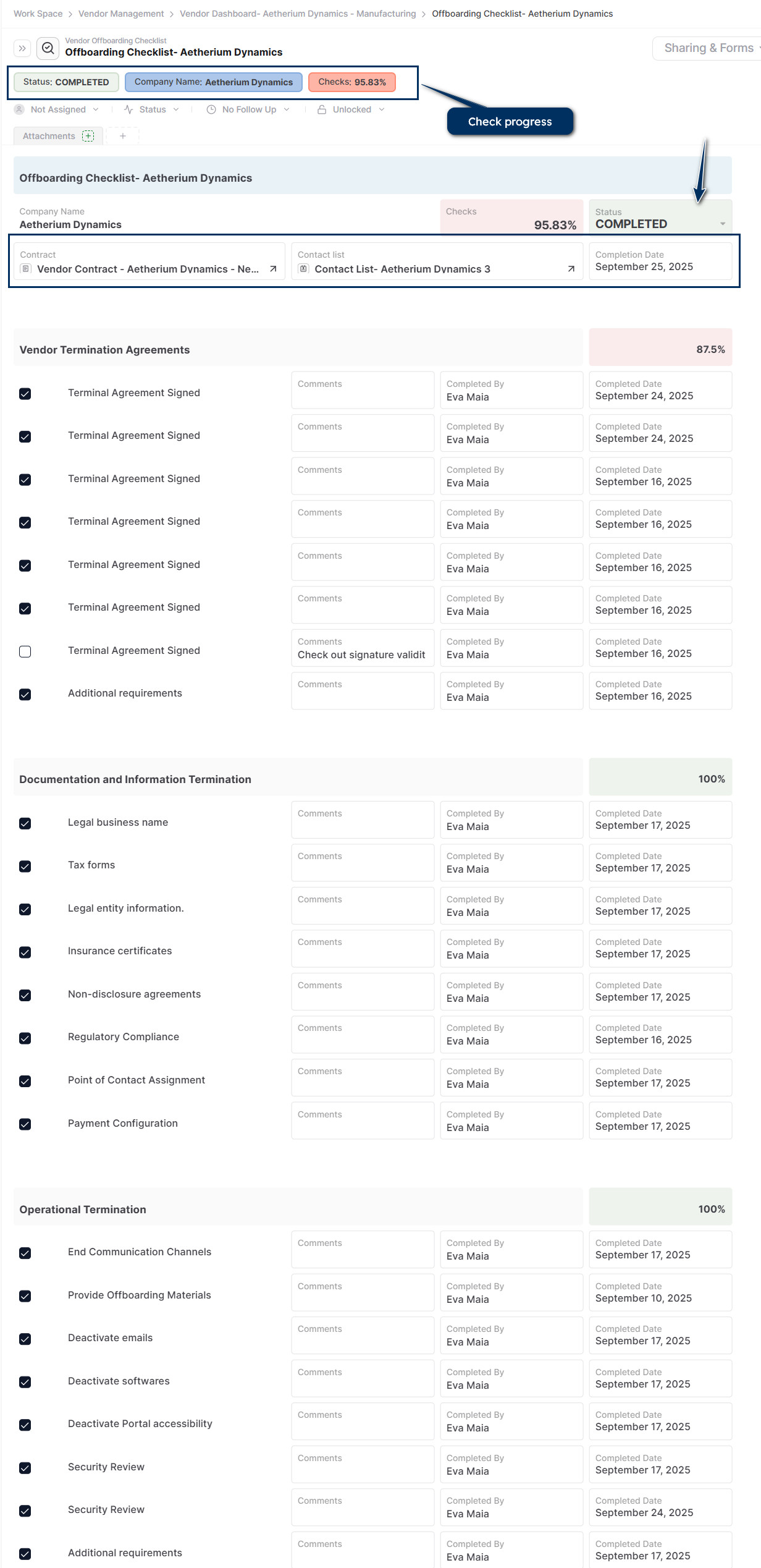
Watch an overview here:
Data Model & Structure
| Field | Description |
|---|---|
| Vendor Dashboard | Overview |
| Request for Proposal | RFP Reponse |
| Vendor Contract | Agreements / Attachments / Approval |
| Onboarding | Checklist |
| Monitoring and Performance | Compliance and Audit |
| Offboarding | Checklist |
Reporting & Views
Use filters and saved views to track:
- RFPs
- Contracts
- Audit checklists
Check the dashboard to monitor:
- Number of contracts
- Number of active contracts
- Total costs of active contracts
- KPIs such as delivery rate, OIT, etc.
Sharing & Collaboration
- Assign project ownership and task-level responsibility
- Use comments and status fields to provide updates
- Share filtered views or dashboards with leadership or clients
- Collaborate in real time with team-based access and permissions
Tips & Best Practices
- Use color-coded priority fields to flag high-risk tasks
- Add follow-up dates for key milestones or reviews
- Use folders or tags to group projects by type or initiative
- Link each task or project to the OKRs they support
- Use Pages for unstructured notes, retrospectives, or planning docs
Pro Tip: Clone